What I learned from and about India this time #393
India is complex. And it is changing. With those changes will come new challenges and new opportunities. We discuss some of them today.
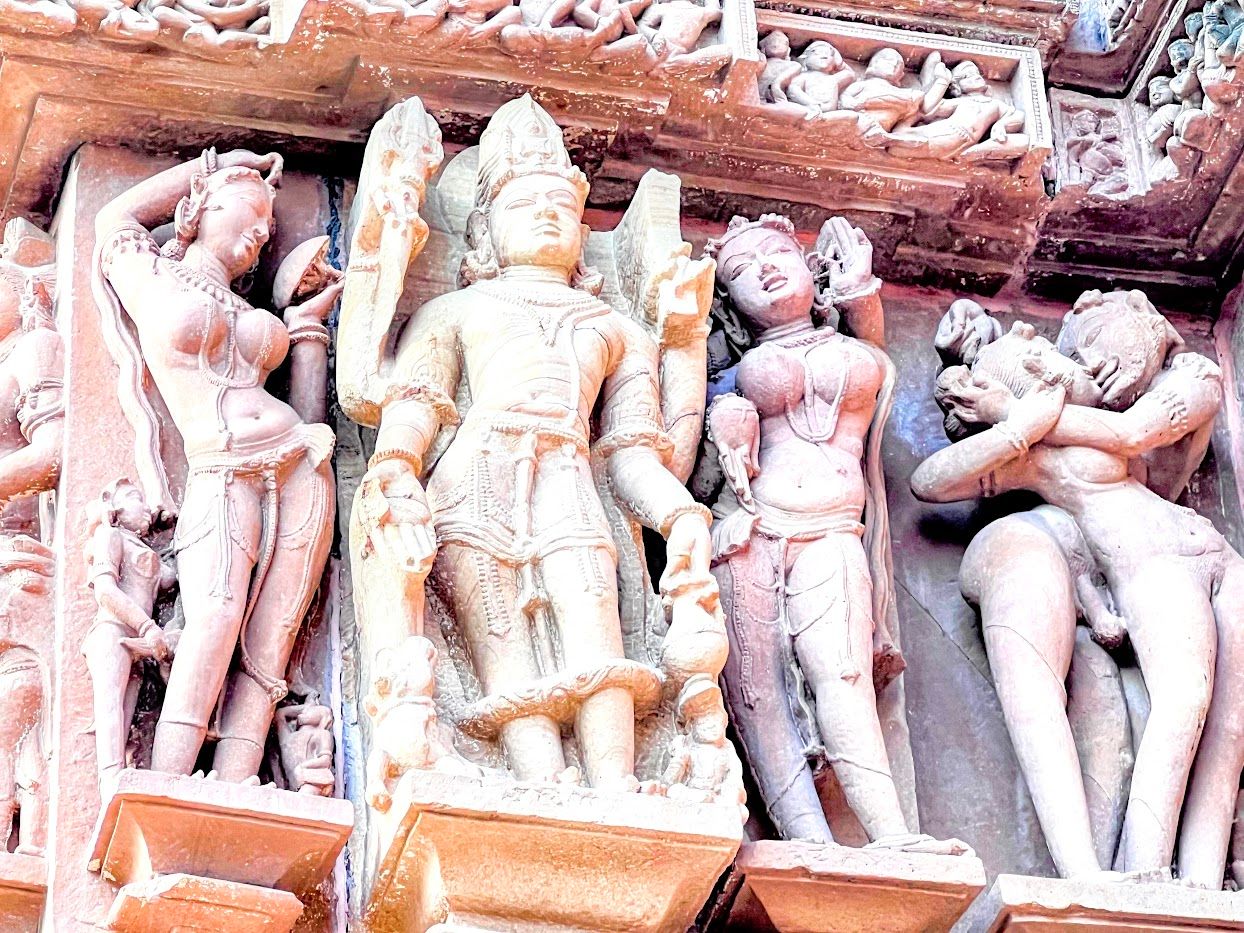
― John Muir
When there is a distance, the perspective changes. Intimacy brings a sense of blindness that cannot distinguish.
That is why my view of India when I lived there and now when I do not is different. It is different not because I have become wiser or somehow think I am big enough to judge a country and society that is extremely complex. But because I have a sense of distance from its everyday happenings.
That brings some insights.
It is these insights that I want to share with you. These aren't complete by any means. Want to add to these which I will in the next week or so.
The India visit
My journey to India started with a European airline flying to Amsterdam (a bunch of co-share airlines mix) and from there on to Mumbai. The flight from the US was delayed by over 2 hours and I missed the Mumbai flight. Got redirected to Delhi and from there to Mumbai.
Two weeks prior to my flight issues, my wife and kid has the exact same experience.
It seems that this is very common for this flight.
Would remind one of the Indian railways of yore, where a delay is the only punctual thing that defines that mode of transport.
The Delhi-Mumbai flight was a Vistara flight.
The food on that flight was better than the two international flights I had taken.
On the evening of arrival, we left for a small town in Uttar Pradesh near Jhansi and Khajuraho.
One of the three-day stays was a visit to Khajuraho.
Khajuraho, Chausanth Yogini Temples and Cultural Appropriation
Khajuraho temples were “rediscovered” by British Army Captain T.S. Burt who ‘re-discovered’ in 1838. Built between 950 AD and 1050 AD by Chandela kings, there were 85 temples in the complex until the 12th century but by the 13th century, due to the destruction by the Islamic invaders, only 22 remained in condition where they had been badly desecrated. The temples were designated a UNESCO World Heritage site in 1986.
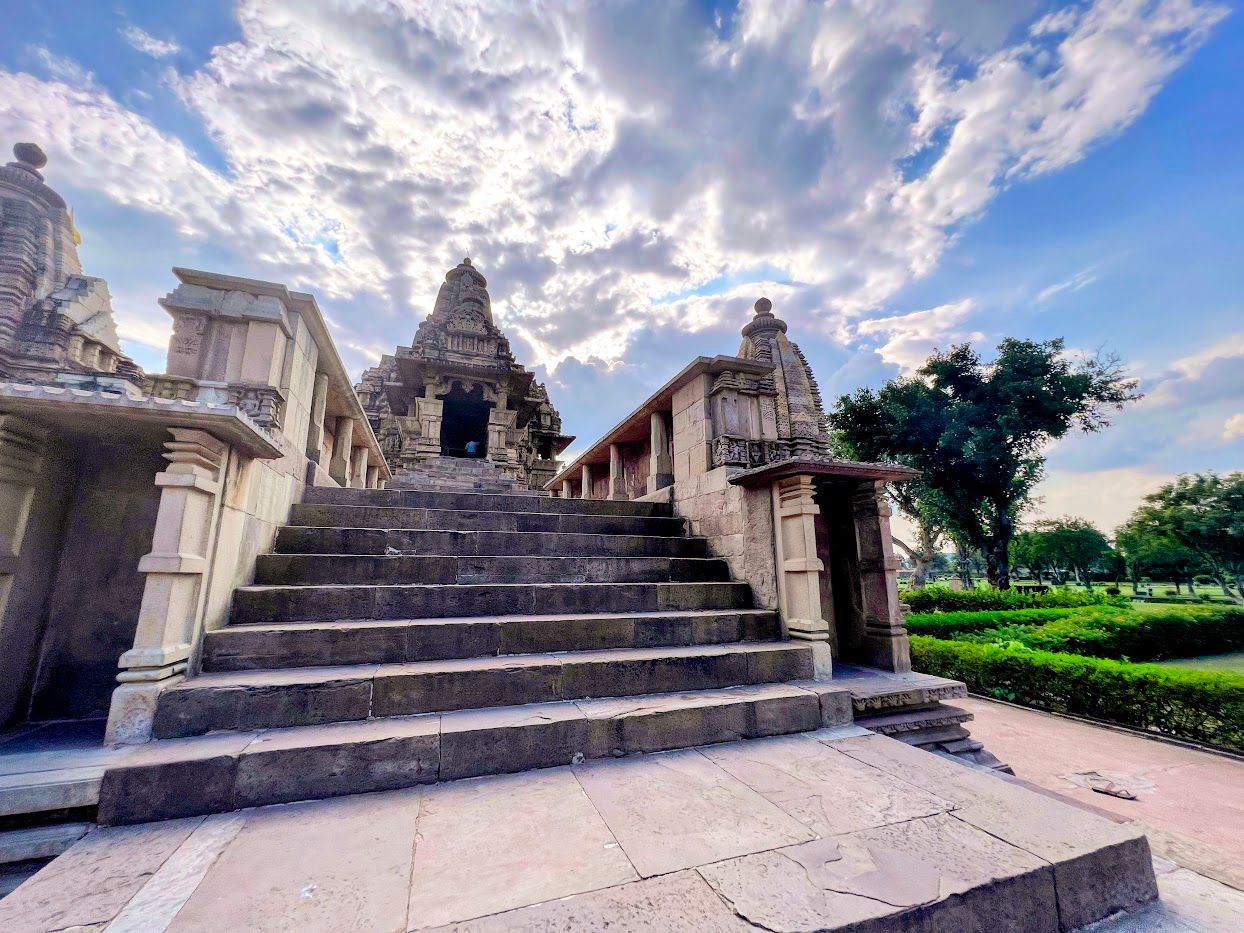
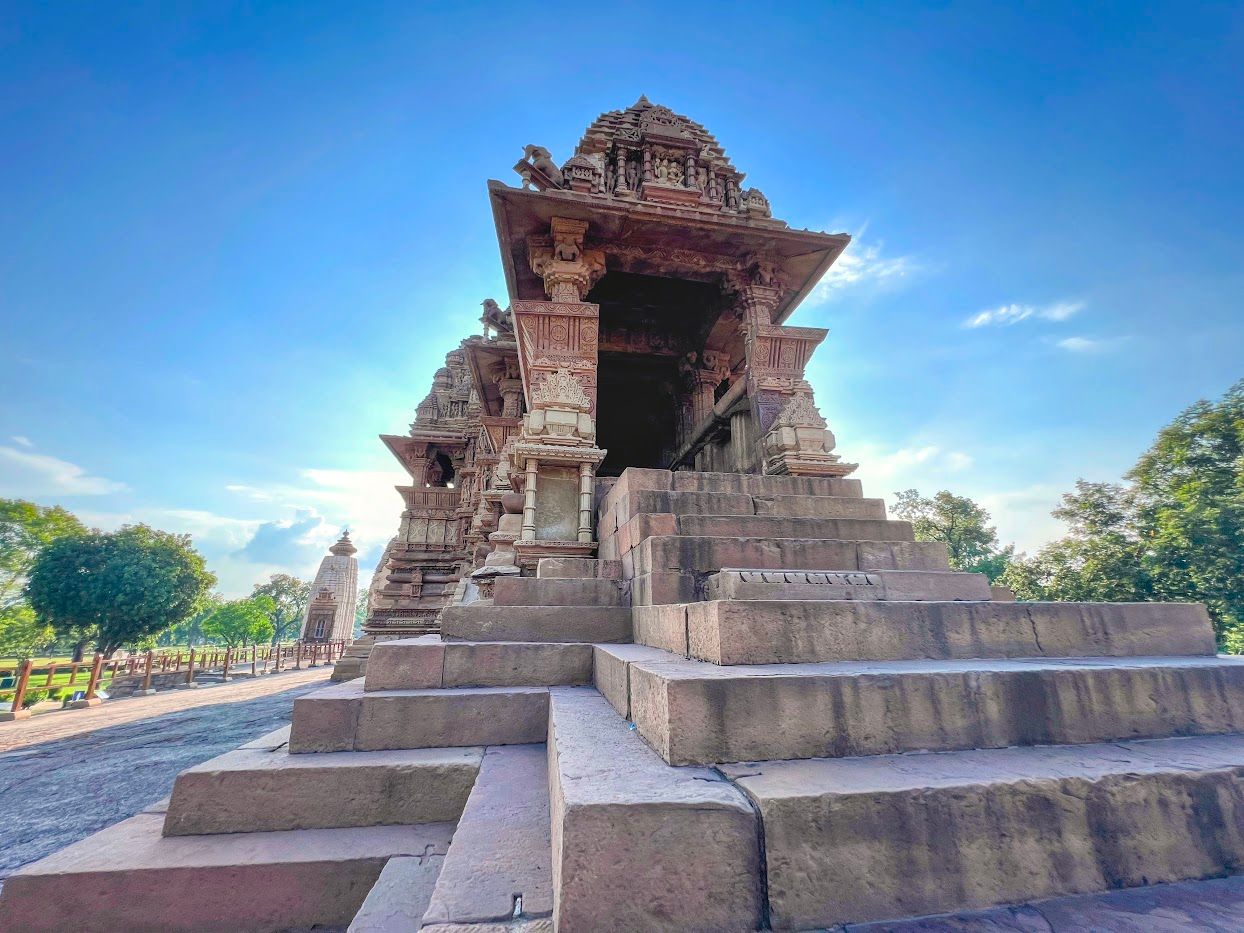
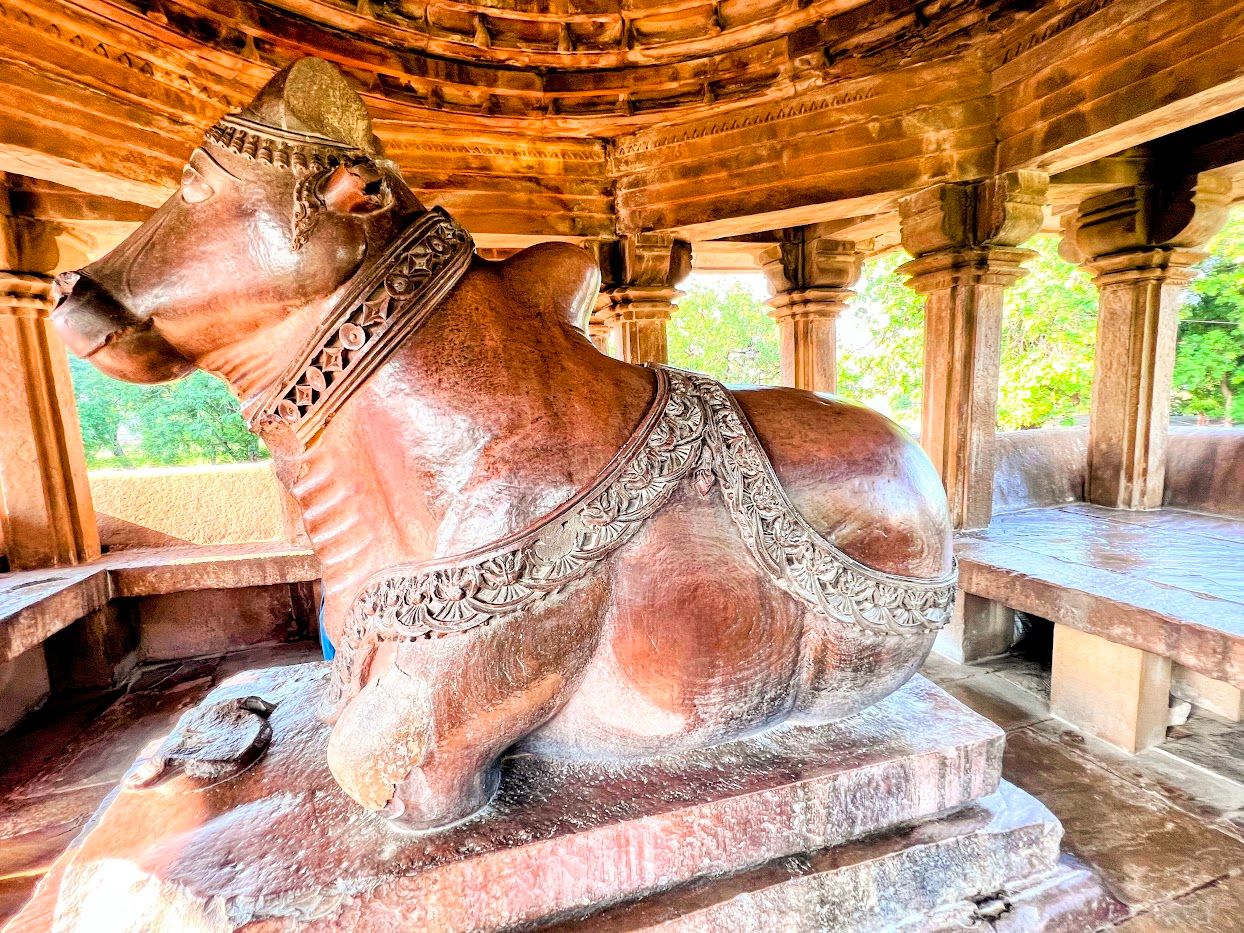
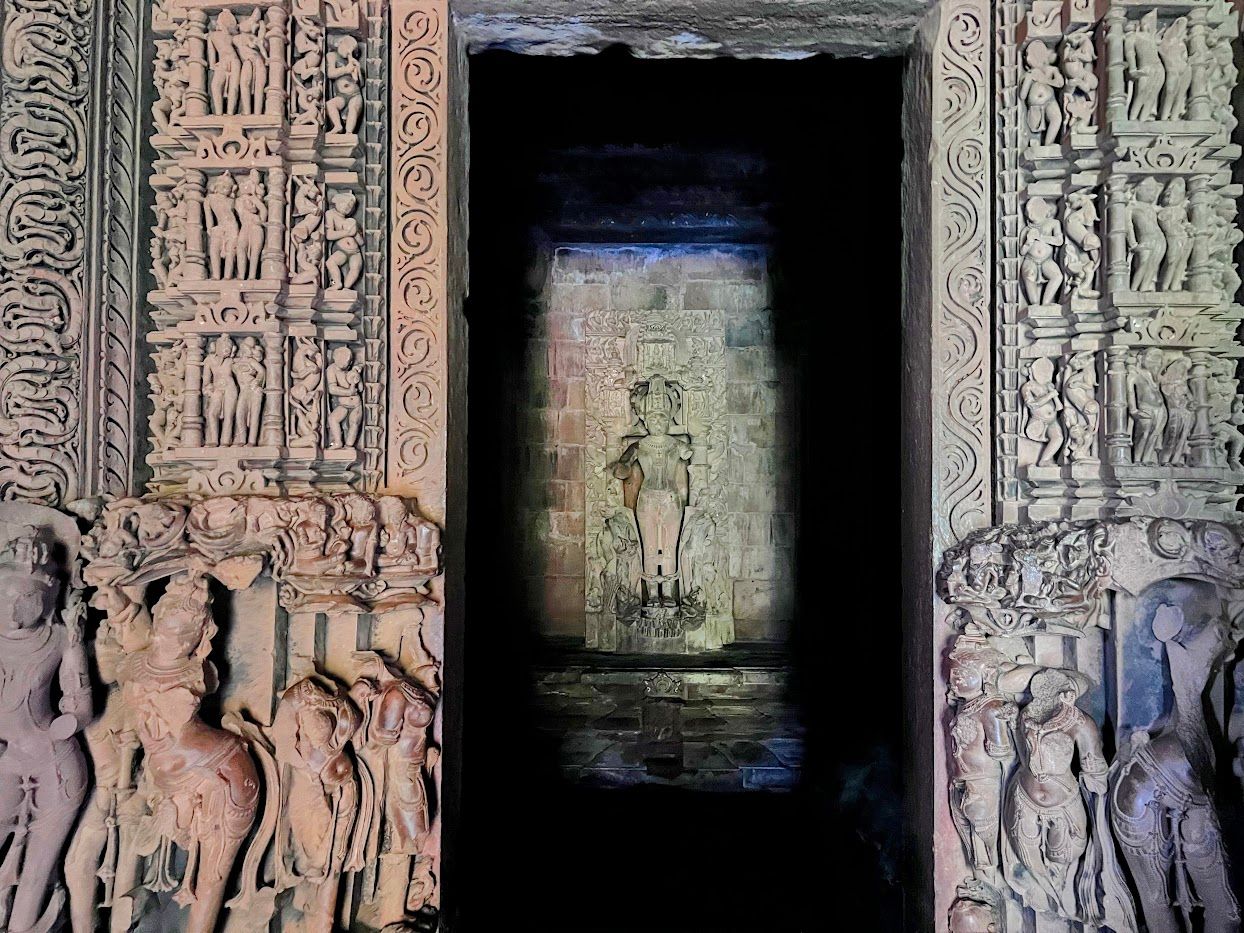
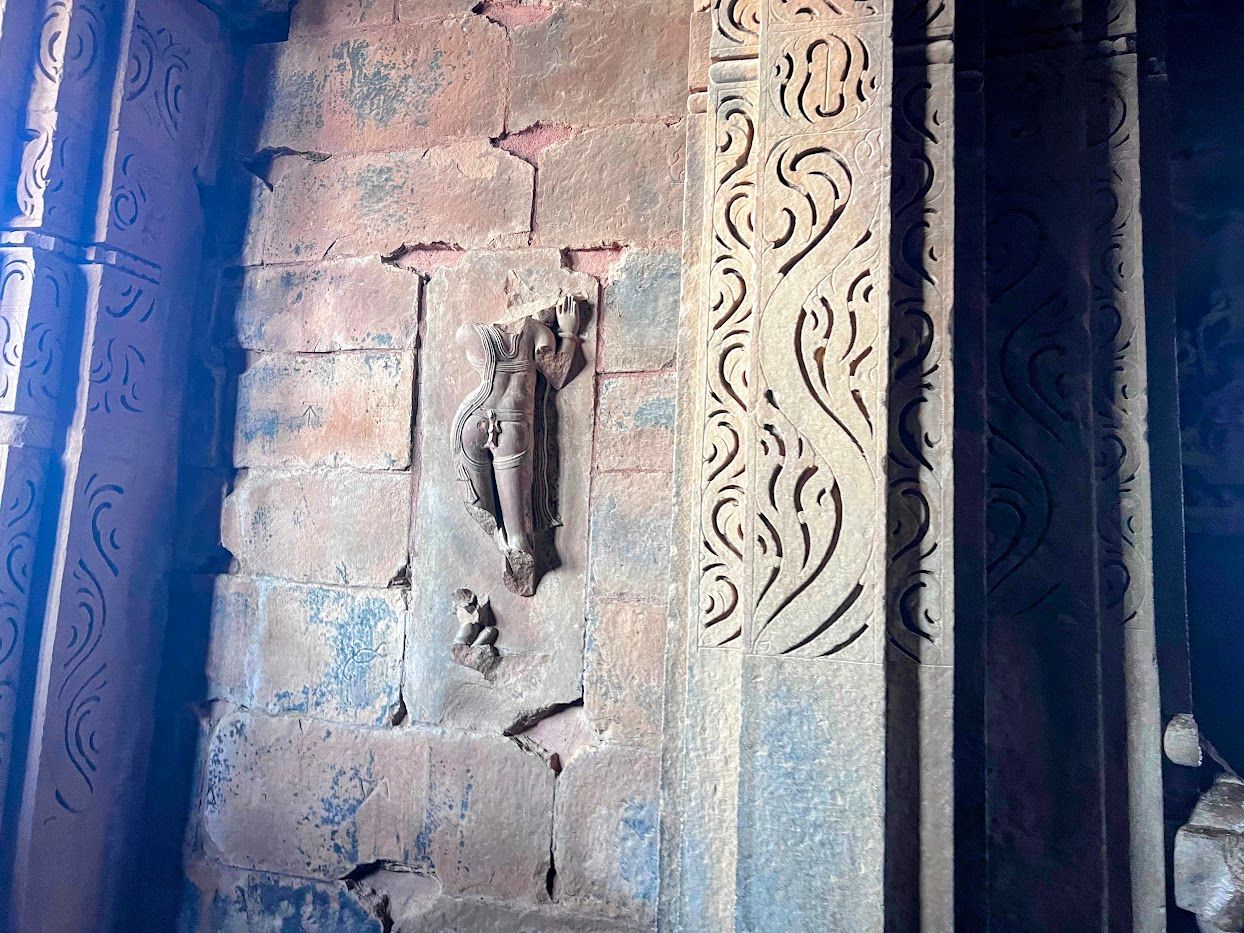
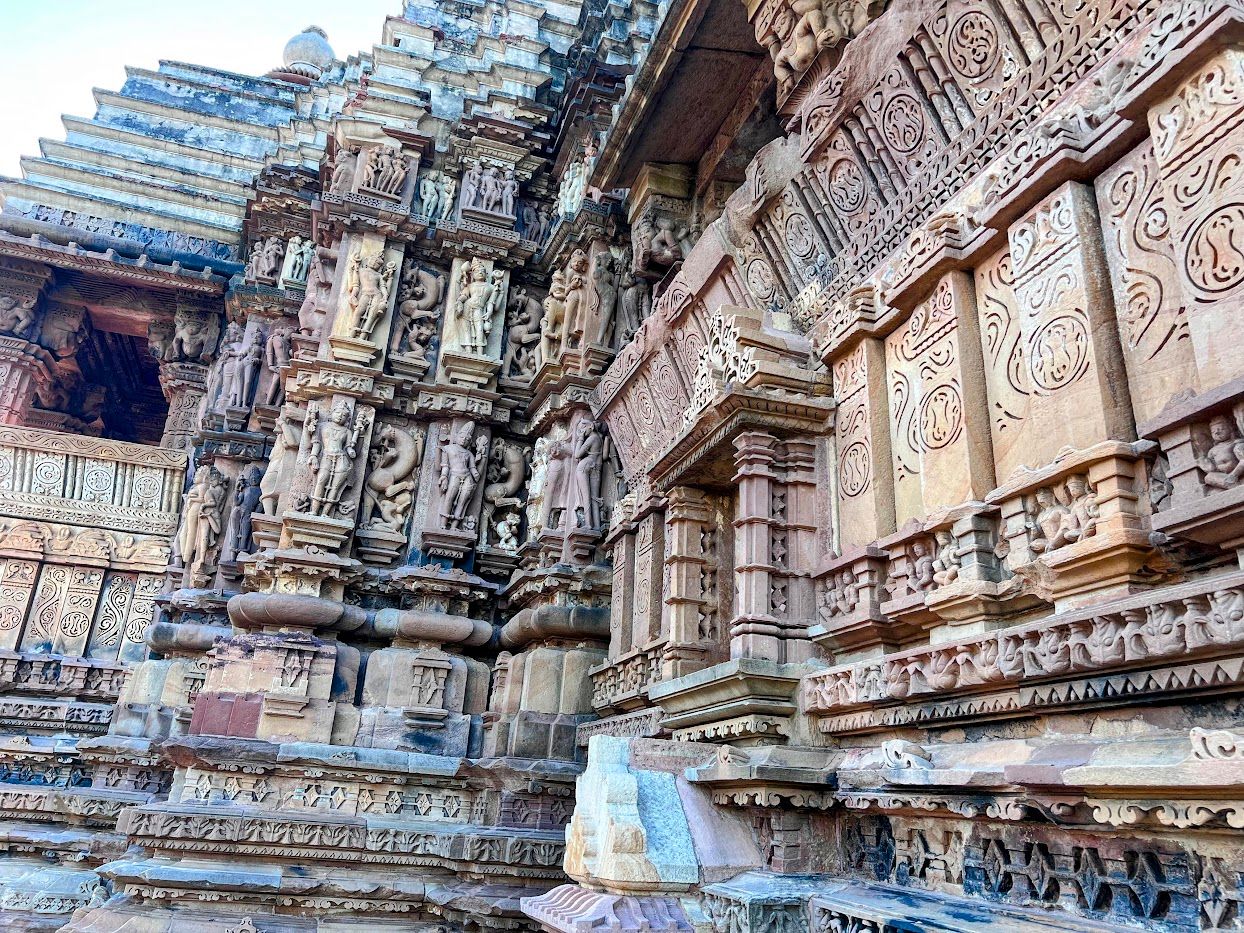
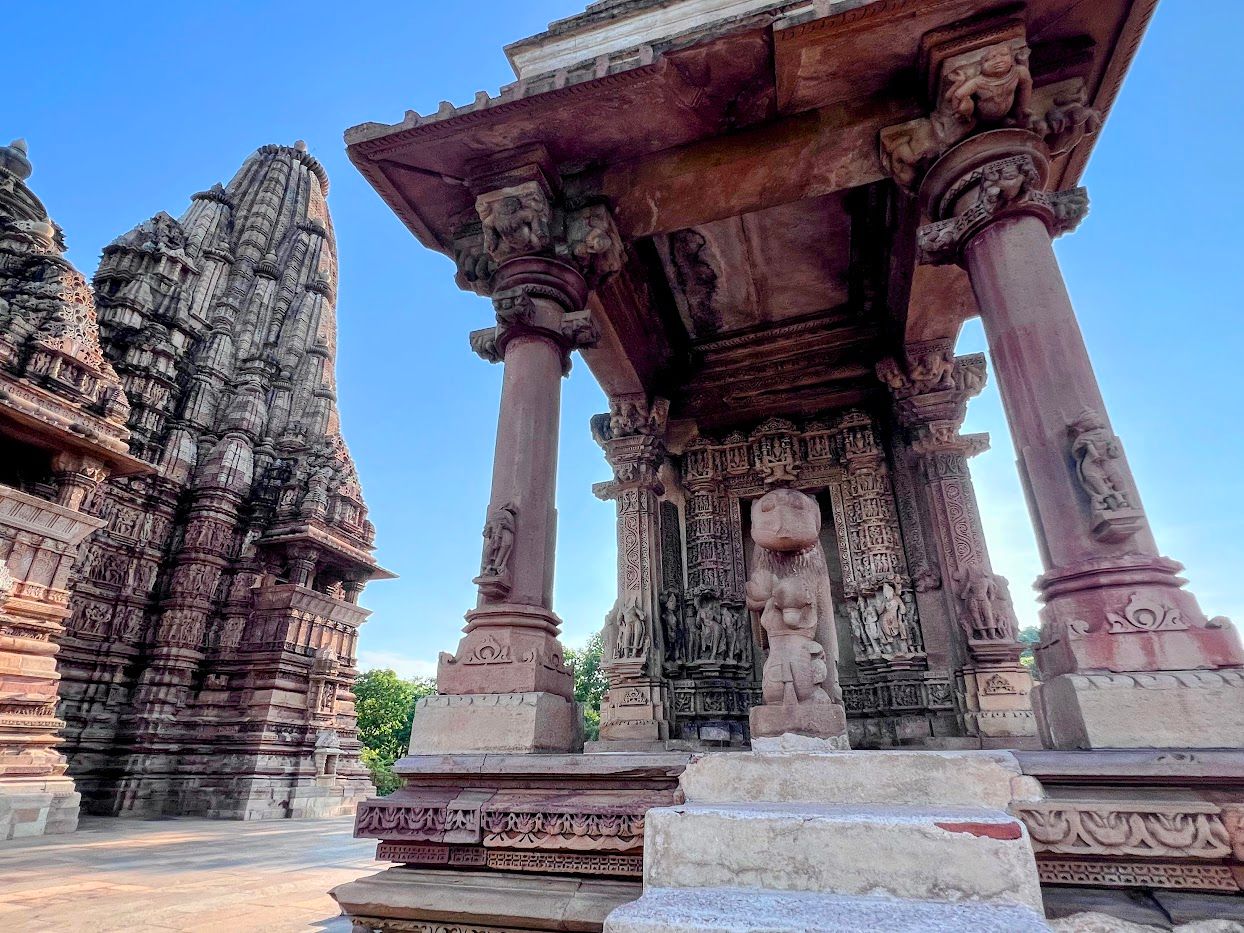
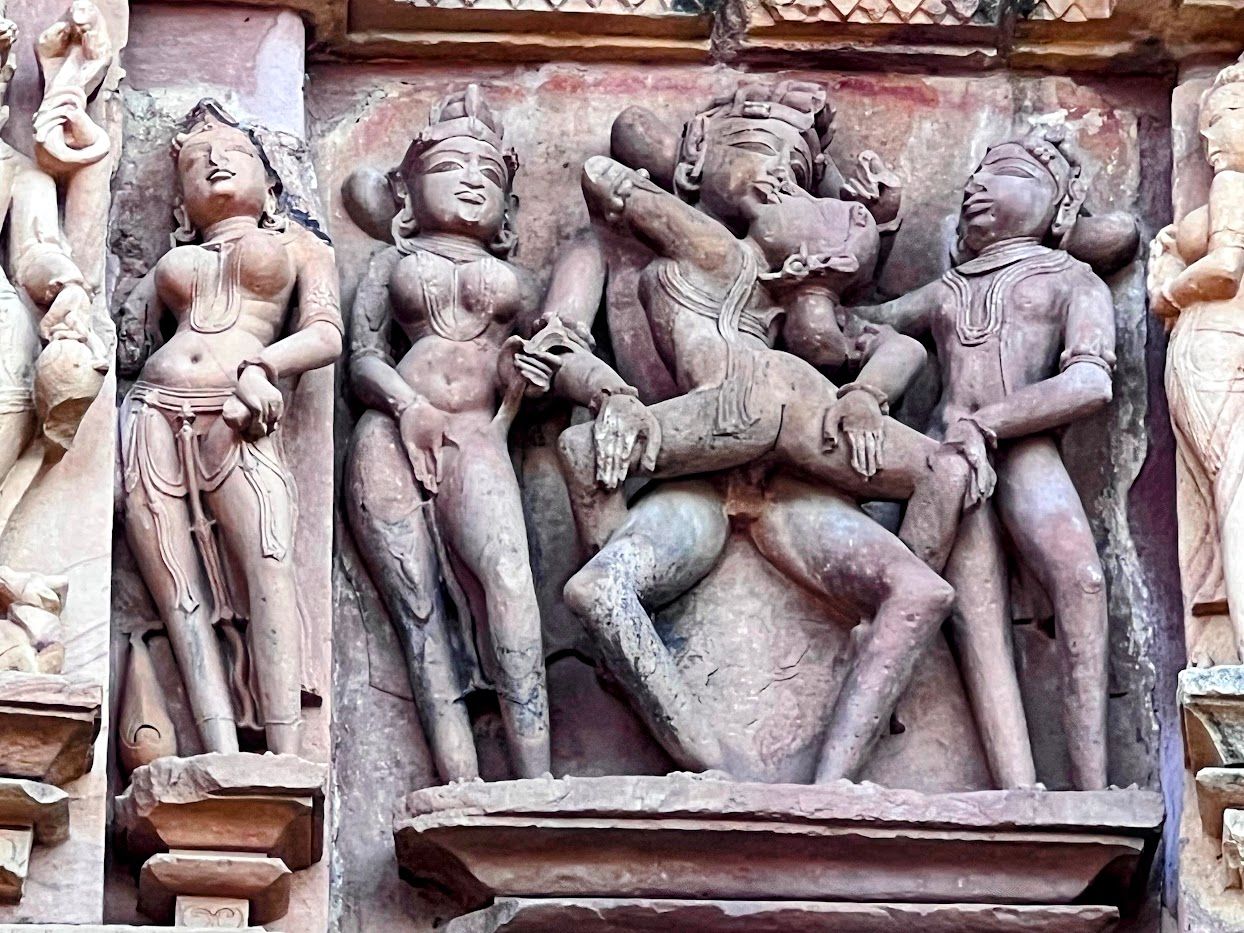
Khajuraho
All these years, I had never heard about the existence of the Chausanth Yogini temple also in the same temple complex, albeit a little distance (walking distance) away. The temple was built for Goddess Durga and the different swaroop (forms) of the Devi (Goddess).
The entire temple is in ruins. No murti survives now.
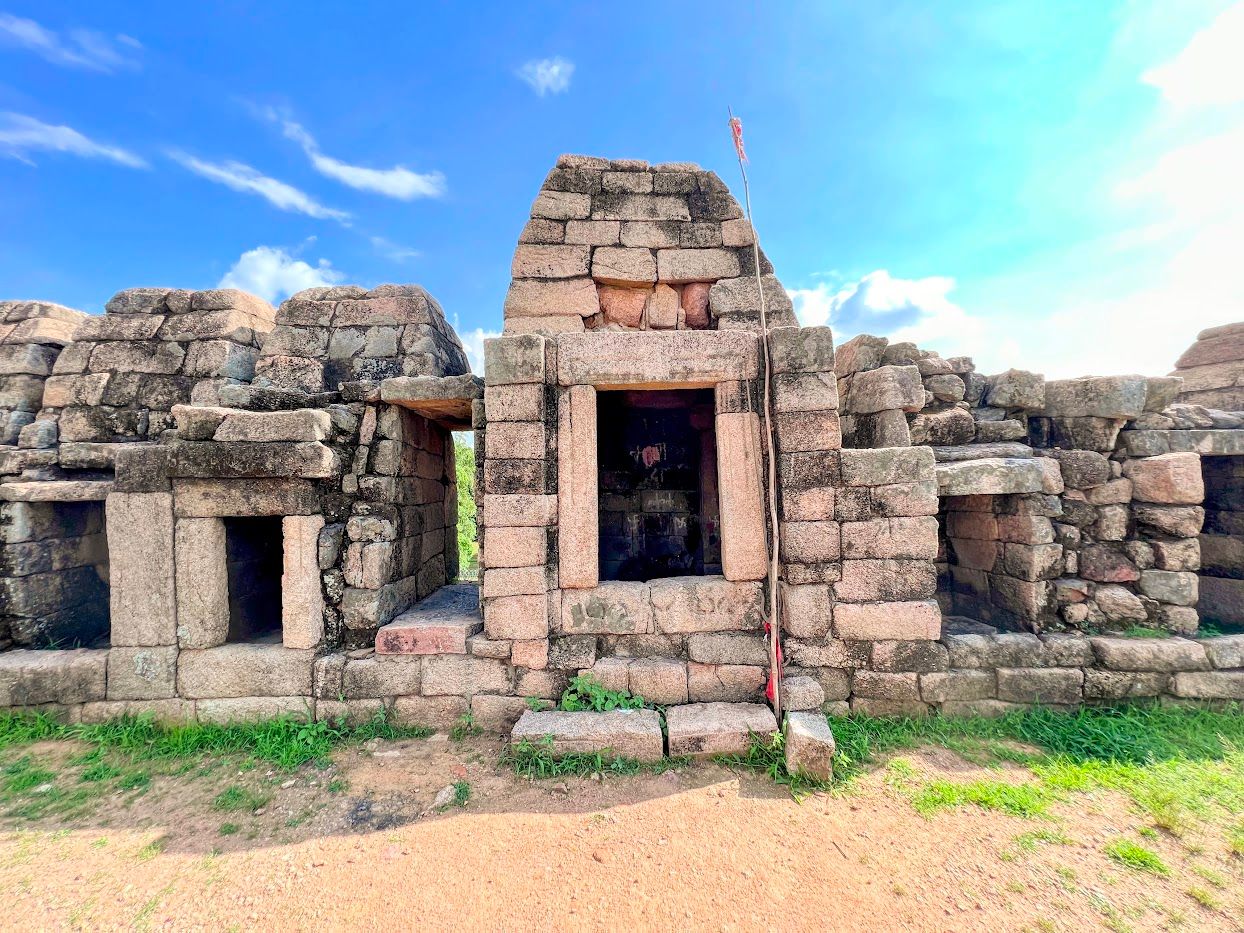
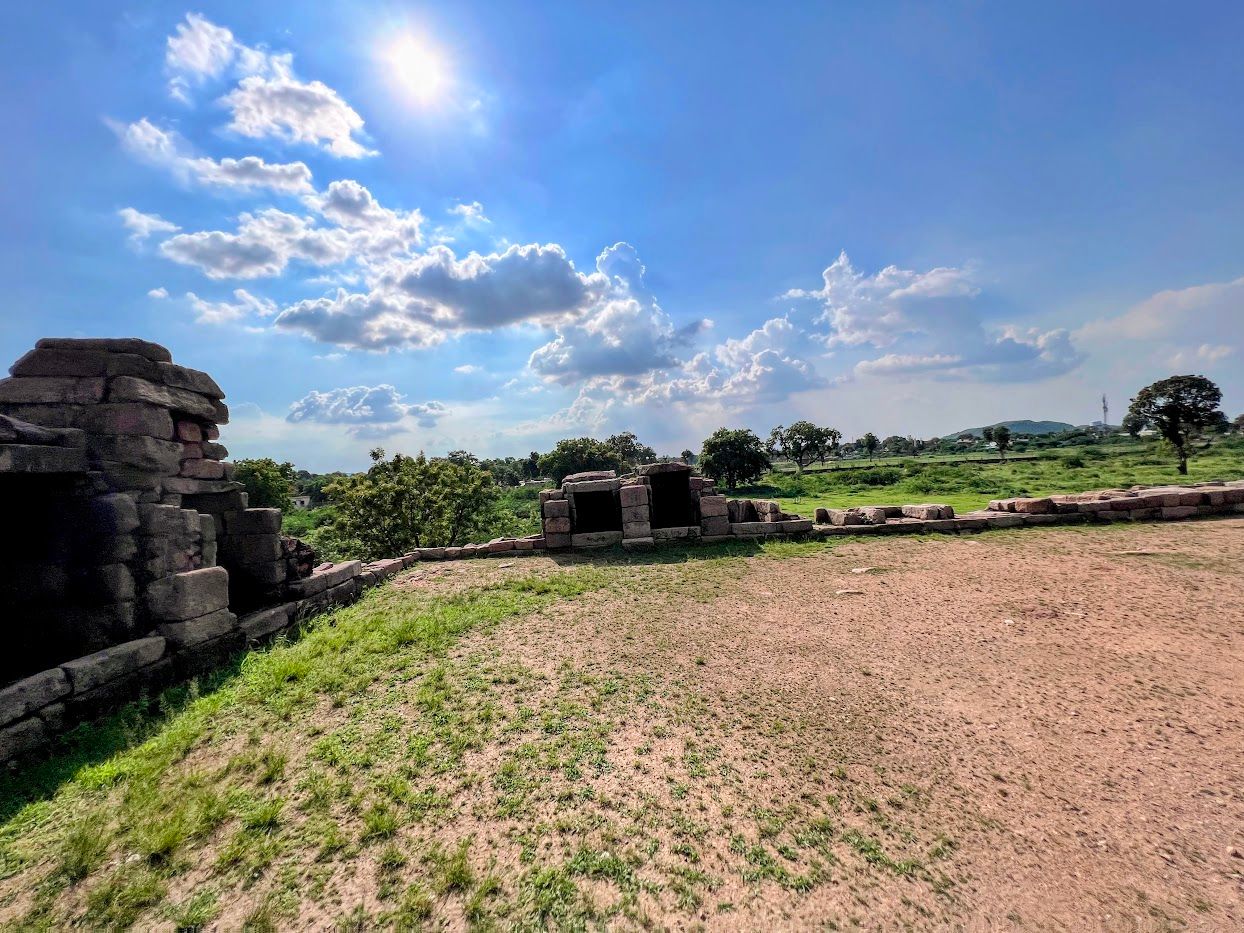
In a book written in 1927, BL Dhama shared the route to Khajuraho from Mahoba, a small town near Khajuraho. The writer went to the town which is known for Betel leaf farming around the country. The road from Khajuraho to Mahoba has been described as unpaved and rudimentary with only bullock carts and ponies as the possible mode of transport.

Today, that road is a highway.
The construction matches global standards. Although its security and accessibility don't.
The breach of security for the traffic happens on two accounts:
- Stray Cattle
- Bad driving habits
Let us talk about the first.
Stray Cattle and Highways
India has about 5 million stray cattle population. Per the 2019 Livestock Census, just UP has 1.6 million stray cattle.

Stray Cattle on the highways lead to many accidents resulting in deaths. In just Haryana, in the last 6 years, a whopping 3000 accidents have resulted in 900 dead.
According to government data, there have been over 3,000 such road accidents in the past six years in which more than 900 people lost their lives. (Source: Haryana govt urged to allot Rs 10 lakh to kin of victims of accidents caused by cattle / Indian Express)
Stray cattle are not just a hazard on the roads in India, but also on railway tracks. 'Cattle Run Over' (CRO) is the term used for cattle deaths on railway tracks. Per an Indian Express article in 2018, the CRO cases increased by 362% between 2015-16 to 2017-18.
The Uttar Pradesh-based North Central Railway alone has seen 1,300 cases of cattle being run over since April this year. This is a sharp 271 percent jump from 349 cattle deaths during this period last year. (Source: Cattle dying on tracks: Numbers double in one year / Indian Express)
Over the last few years, accidents on railway tracks with stray cattle have increased.
The number of cattle that have come under a moving train has gone up from about 2,000-3,000 in 2014-15 to over 14,000 in 2017-18. In the fiscal year ending March 2019, it went up to nearly 30,000, a record jump, becoming a cause of deep concern for railway authorities. Not all cattle incidents on railway tracks result in the death of the bovine creatures. According to railways data, while about 18,900 trains were affected in 2017-18, nearly 43,000 trains were ‘cattle-hit’ in 2018-19. In the current fiscal, in the April-May 2019 period, about 5,500 ‘cattle run over’ (CRO) cases were recorded on the tracks, affecting over 7,000 trains. (Source: "Railway Tracks Continue to be Hazardous Zones for India’s Cattle" / The Wire)
It is obvious that the menace of stray cattle is the direct result of unproductive years of the cattle when it is let loose. No one cares for them once they stop giving milk. In such a situation, the Gaushalas or "Cow Shelters" are the places that take care of the cattle during their unproductive years. These gaushalas are being run more out of tradition and service as opposed to an organized way to care for the animals.
The 1800 registered cow shelters in India have managers who are important stakeholders in the management of cows in these unique institutions. It is important to survey the routine management of these shelters and attitudes of the managers towards cow welfare to identify the constraints and welfare issues. We visited 54 shelters in six states of India for a face-to-face structured interview of the managers. Quantitative data collection included questions on demographics, routine management operations, protocols followed in the shelters and attitudes of the managers towards cow welfare. All shelters except one were managed by males, half of them were in the age range of 45–65 years, were university graduates or post-graduates, with 5–15 years shelter management experience, and with the majority having lived in rural areas for most of their lives. Each shelter housed a median of 232 cattle were housed, out of which 13 were lactating cows. The majority of managers vaccinated their animals against endemic diseases like foot and mouth disease, haemorrhagic septicaemia and black quarter (gangraena emphysematosa) and administered endo-and ectoparasiticidal treatments, however, hardly any screened the cattle for brucellosis and tuberculosis. Only 17% of the shelters had in house veterinarians and most cows died of old age, with an annual mortality rate of 14%. The majority of the shelters allowed the cows to reproduce. Access to pasture was available in only 41% of the shelters, while most allowed some access to yards. Most (57%) had limited biosecurity measures, but 82% of the shelters disposed of the carcasses by deep burial on their own premises or through the municipality, with 18% disposing of them in open spaces or nearby creeks. About one half of the shelters maintained records of the protocols followed routinely. Charitable societies ran half of the shelters, mostly through public donations, with accounts audited regularly. Most managers thought that shelter cows’ welfare was important and that they should attempt to improve it. They were less in agreement that their knowledge of animal welfare was adequate. Local support, more moral than financial, was recognized more than government support. (Source: The Management of Cow Shelters (Gaushalas) in India, Including the Attitudes of Shelter Managers to Cow Welfare / National Library of Medicine)
We were in the Bundelkhand area. And the proliferation of stray cattle - cows, bulls, buffaloes on the highways was phenomenally high. This is despite the fact that UP Chief Minister, Yogi Adityanath had personally sanctioned a scheme to make the gaushalas there more self-reliant.
He had instructed the officials to ensure that all the cow sheds are self-reliant in order to combat the menace. The Chief Minister had also announced that the government will give Rs 30 on a daily basis for each cattle for the fodder if the owners are not using them for commercial purpose. He instructed the officials to take this plan as a pilot project in Bundelkhand region. (Source: Cattle dying due to lack of ‘proper fodder’, say locals in Uttar Pradesh’s Barabanki; authorities to probe issue / FirstPost)
Gaushalas and individual effort is not enough. The cattle during their unproductive years is an issue that needs addressing. Paying for its care is not the way because corruption in the system keeps the nourishment and care away from the needy cattle as the middlemen pocket the money.
Now, back to Khajuraho.
Exotic Mayan Shaman and his performance
But before that, let us go back to our visit to Mexico a few weeks back. We were in a Mayan village near Chichén Itzá, a place that is now known for its tourism.
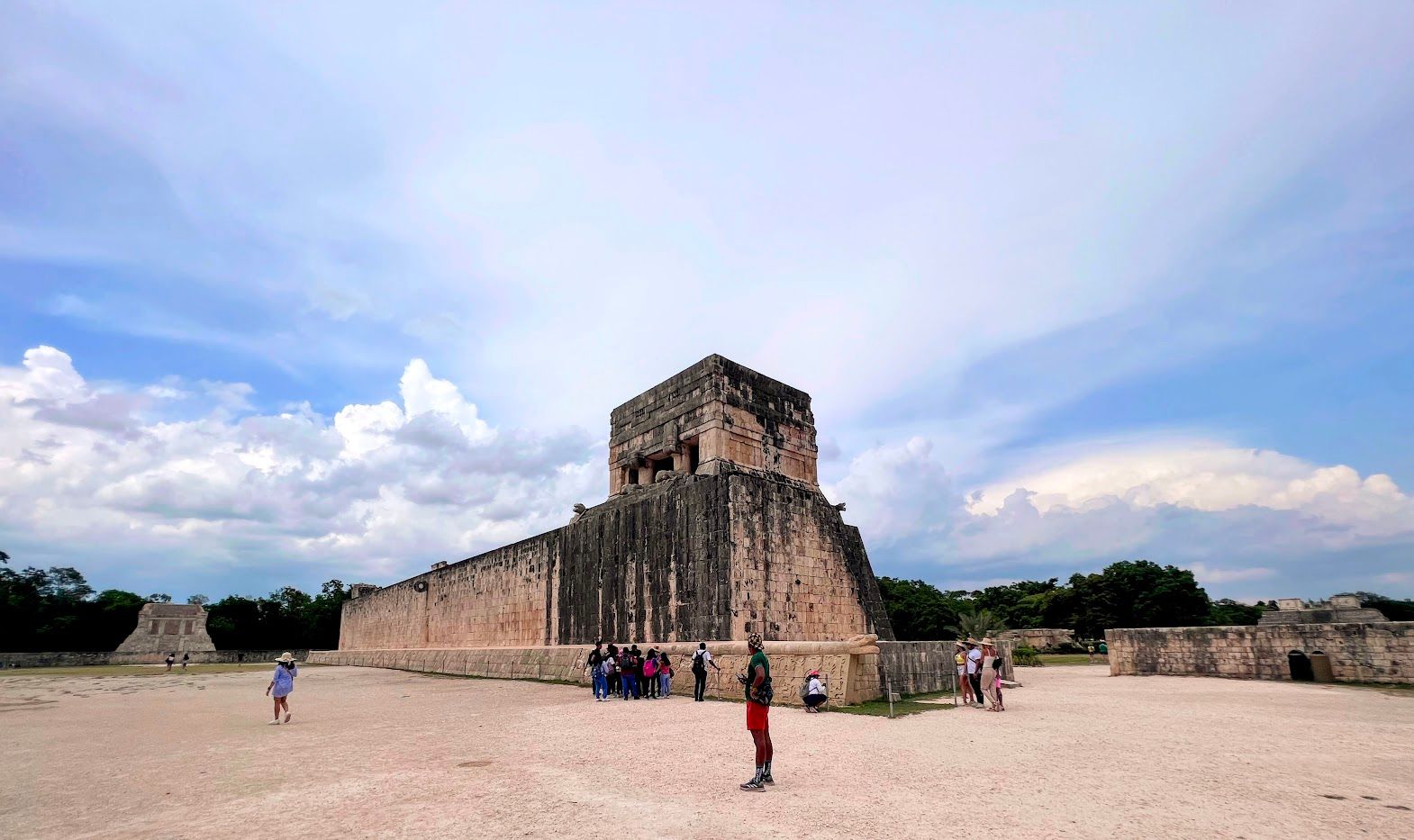
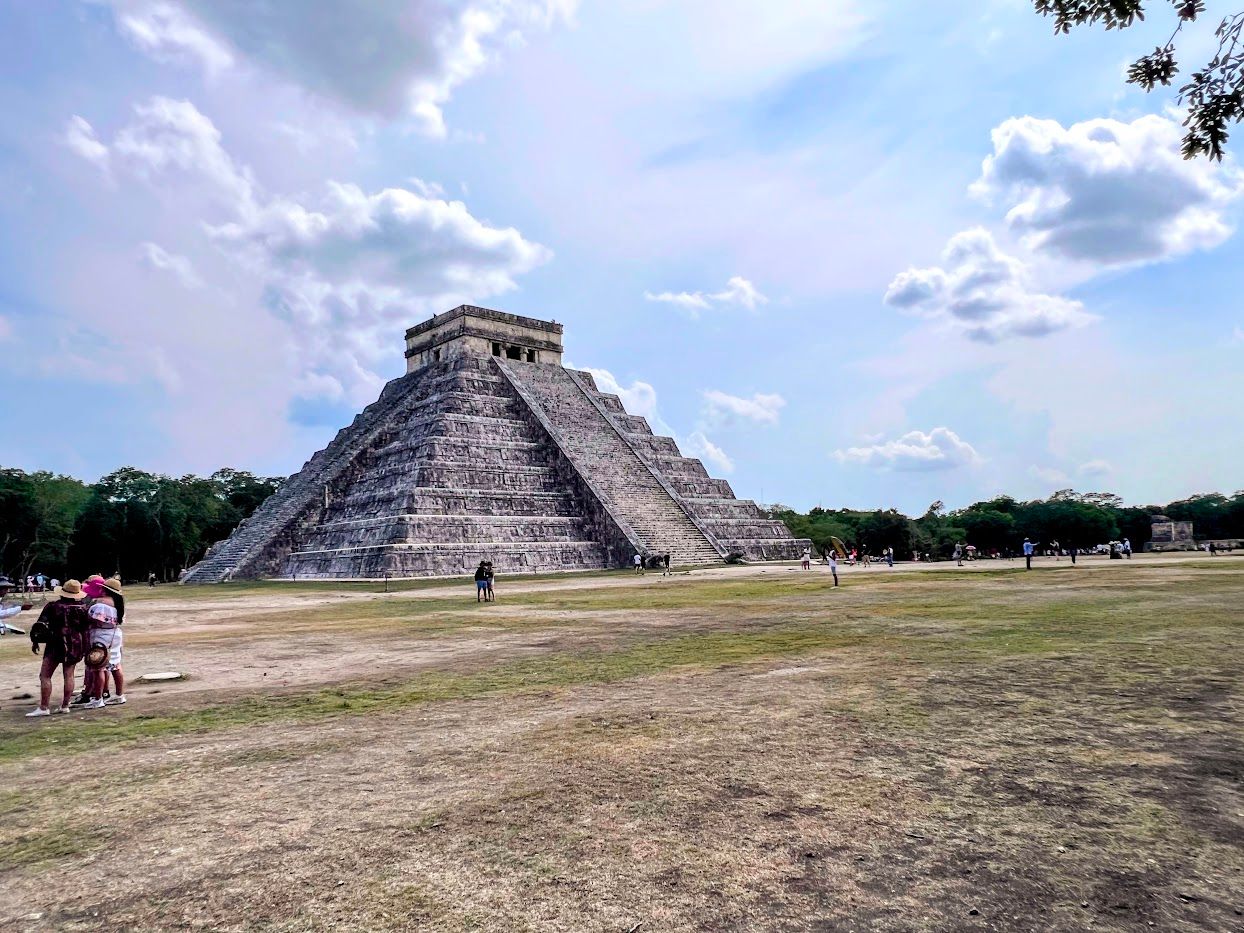
We were all taken to a "Mayan Village" where a Shaman was introduced who was doing a small ceremony to cleanse the aura. Basically what in Indian households is known as "Nazar utaarna".
The main attraction is the pyramid which 'comes alive' twice a year during the equinoxes.
On the days of spring and fall equinox, the edge of the shadow from the sun, falls exactly on the corner of the pyramid, leaving one side in total sunlight and the other in total shadow. This always provides the shadow on the balustrade which takes on the appearance of slithering snake. (Source: Thomas More Travel)
While the tourists, mostly Western, lapped up the whole exotic experience, I - from an ancient spiritual heritage - was saddened and alarmed.
Will our yogis be on exhibition for some tourists to clap at one day?
The best way to devalue and destroy a civilization and spiritual heritage is to characterize it as "exotic" while undermining the society that created it.
The guide (who was an ethnic Mayan) shared with us the architectural wonders of the pyramid and the cultural aspects of Mayan but at the same time rubbished the pyramids as venues of human sacrifice.
The question one had was - If these people were so advanced at that time to correctly construct such a huge building to align with the cosmic events, then were they so banal?
There was no answer.
It is a classic process of Cultural Appropriation.
Exotifying to kill
My approach to the Khajuraho was sobering.
That set me thinking deeply about what had been done to the Dharmic spiritual heritage.
When someone exotifies anything, one necessarily shrouds the whole characterization or rather caricaturisation in stereotypes. Stereotypes are erected by the dominant player such that the exotified culture is made to look savage and inferior with some elements being unusual and worth exhibiting for entertainment.
The context and real meaning as the people who own the cultural practices saw it is stripped away. What remains is the limited definition of the exotified target.
The inferior cultures, at some point, fashion their own heritage as no more than exhibits. In an attempt to mimic the cultures that they perceive to be dominant, and by extension worthy, they run down their own lineage and heritage. This happens on the back of an entire set of definitions and contextualizing that the dominants have set forth.
For example, Khajuraho is paraded not as a Shiva Temple or a spiritual space but as an exotic ‘monument’ for cultural exhibitions and performances. Cultural appropriation by the Indian government which was primarily in line with the Western way of undermining Indian spiritual heritage (yoga being the most prominent example) had very effectively and permanently stripped Khajuraho and its surroundings (along with the Chausanth yogini temple) of its spiritual significance to the native seekers of Sanatan Dharma.
Temples were not Community Centers. Deities were not exhibits. Spirituality was not worship.
Once every aspect of culture was reduced to stereotypes, then appropriation was a natural phenomenon!
By removing symbols and practices of a culture from its context and population, and identifying these as Other, exoticized value is placed on the objects and symbols rather than the people and their cultures. Exoticization has been exemplified through the use of Native American dress as costume for non-Native performers, blackface makeup in conjunction with racist portrayals of Black people as objects of ridicule, using cultural dress such as Japanese kimono and makeup or movement to identify performers as Asian when they are not, and orientalist practices in the portrayal of Middle Eastern or North African characters or cultures. In all of the previous examples, value is placed on objects, caricaturized behaviors, and worn identifiers of a culture or race such as clothing or makeup rather than members of the culture or race themselves. (Source: Exoticism and Exploitation / Cornell University)
After the tryst with history in Khajuraho and the surrounding areas of Mahoba and Kulpahar, one proceeded to Delhi.
Via a train.
Railways - progress and misses
One young lady suspiciously moved close to the edge of the platform and sat there facing the tracks. She adjusted her saree and started looking down with an expression of relief on her face. A track of liquid spilled where she sat making its way to the tracks was the only indication of what had transpired.
She quickly got up and proceeded to wash her hands.
As we sat at the Jhansi railway station waiting for the train to Delhi, the stench of urine and poop was overpowering. The only toilets were on Platform #1 and everyone who needed to relieve herself or himself had to go over to that platform.
Some had no time for that.
Many platforms and railway stations around the country have been improved. But most remain dirty and filthy.
The goal should be to bring all of the stations to a respectable level of amenities such that they aren't health hazards. Which they are currently.
The cleanliness of the trains is also quite similar. Some are showcased while most remain dirty.
Things have improved from what they were in the past. Tremendously. But a lot needs to be done.
One of the major changes was the timeliness of the trains. Yes, some trains do start or reach late but for the most part, the trains were leaving around the time promised.
After a few uneventful days in Delhi, one returned to Mumbai.
Mumbai - Neurotic Planners and Abandoned Buildings
Whether you are driving on a road in South Mumbai, Versova, Thane or Kandivali, one specter awaits you.
The Speedbreakers.
They are all over the place.
Every road.
Roughly 10 to 15 feet apart.
Now think of it - the traffic in Mumbai is anyway never moving at more than 30 kms per hour on such roads. And, then you have speed breakers at a distance of no more than 20 feet on such roads.
That isn't ignorance. It is lunacy. Sadistic lunacy.
Worse. The citizens find it normal.
What the more aware ones are protesting about speed breakers in the slow-moving city is not the overwhelming and idiotic proliferation of so many of these breakers but the lack of signage around them! These are the more enlightened Mumbaikars.
Mumbai’s roads being dug up or barricaded on account of the numerous ongoing infrastructure projects is a perennial challenge faced by citizens. The other, almost equally problematic one, is of speed breakers. Vital though the issue is, it is not taken seriously enough. On social media platforms like Twitter, where citizens reach out to the Brihanmumbai Municipal Corporation (BMC) and other authorities, one of the issues that remains unattended to or does not receive any response is that of speed breakers. One particular Twitter handle called @RoadsOfMumbai has for the last one year been raising the issue of the substandard quality of speed breakers in various parts of Mumbai. The page has shared videos of drives conducted on various roads to demonstrate how there are no signboards warning drivers of an impending speed breaker and neither are the speed breakers painted with stripes as mandated by guidelines. (Source: City’s carelessly constructed speed breakers raise hackles / Hindustan Times)
What would make the city planners create such a regressive road infrastructure in this city? Something that one has not seen in any other city of India.
The other spectacle that you cannot miss in Mumbai while you are traveling around the city is that of the abandoned building.
No, not the old buildings, of which there are many. But the high rises that never got completed.
High-rise buildings in different states of completion have been abandoned and left alone. Plants and even trees have started growing on their walls and high floors.
They are a product of the push and pull of social needs and a lethargic legal system.
Mumbai is one of the most populous cities in the world. It has a population of over 21 million which keeps growing at a rapid pace. (World Population Review). In such a densely populated city, there is a tremendous need for housing. That need is met by the builders. Due to a lack of clear ownership of real estate assets and convoluted construction laws created for political payments the real estate market is forever a slave of the changing political fortunes.
The result is a proliferation of illegal buildings and high rises. For example, in the rapidly expanding suburb of Thane, 90% of all buildings are illegal!

The legal tangles when juxtaposed with the inefficient financial structures create a heady mix.
A real estate nightmare.
Delays have been the bane of India’s real estate sector over the past decade. It is fairly common for builders to postpone projects citing financial strain or labour challenges, which only result in hardships for homeowners who continue to pay back loans and live on rent while waiting for their dream homes. As many as half a million homes worth Rs 4.48 lakh crore across seven key markets in India are yet to be completed, real estate consultancy Anarock said in a report. The National Capital Region (NCR) and the Mumbai Metropolitan Region together account for 77 percent of such projects, followed by Pune at 9 percent. The southern metros of Bengaluru, Chennai and Hyderabad together have a 9 percent share, while Kolkata accounts for 5 percent of the delayed homes. (Source: "State of Real Estate: Abandoned construction sites, undelivered homes, shattered dreams" / Moneycontrol)
There is another aspect of this whole situation.
Dilapidated buildings where people continue to live. 16,000 buildings are not worthy of living! We have a disaster in one of the largest cities in India waiting to happen.

When the real needs of people are caught in the crosswinds of corporate and political greed and an archaic and effectively abandoned legal system managed by a judiciary that has strong political ambitions as opposed to serving their constituents via law - then what you have is a very messy living spaces and impatient populace.
The changes needed are not that tough or complicated. The perspective to see through the quagmire needs to be there.
The Financial Leap and the Business Strengths
Melissa Frakman, Founding Partner and CEO of Emphasis Ventures (EMVC), was on Nasdaq TradeTalks to discuss why the digital infrastructure being built in India today will transform global markets in the next decade.
It is significant.
Because more than ever, now in the post-COVID era, the huge chasm between the Indian financial infrastructure and that in the rest of the world hits home hard.
Unlike in the past, there are hardly any queues near an ATM. Very soon they may be relics of the past in India.
Everyone uses digital payments with apps built on top of the Unified Payment Interface (UPI) infrastructure.
Please read our past newsletter on this topic.
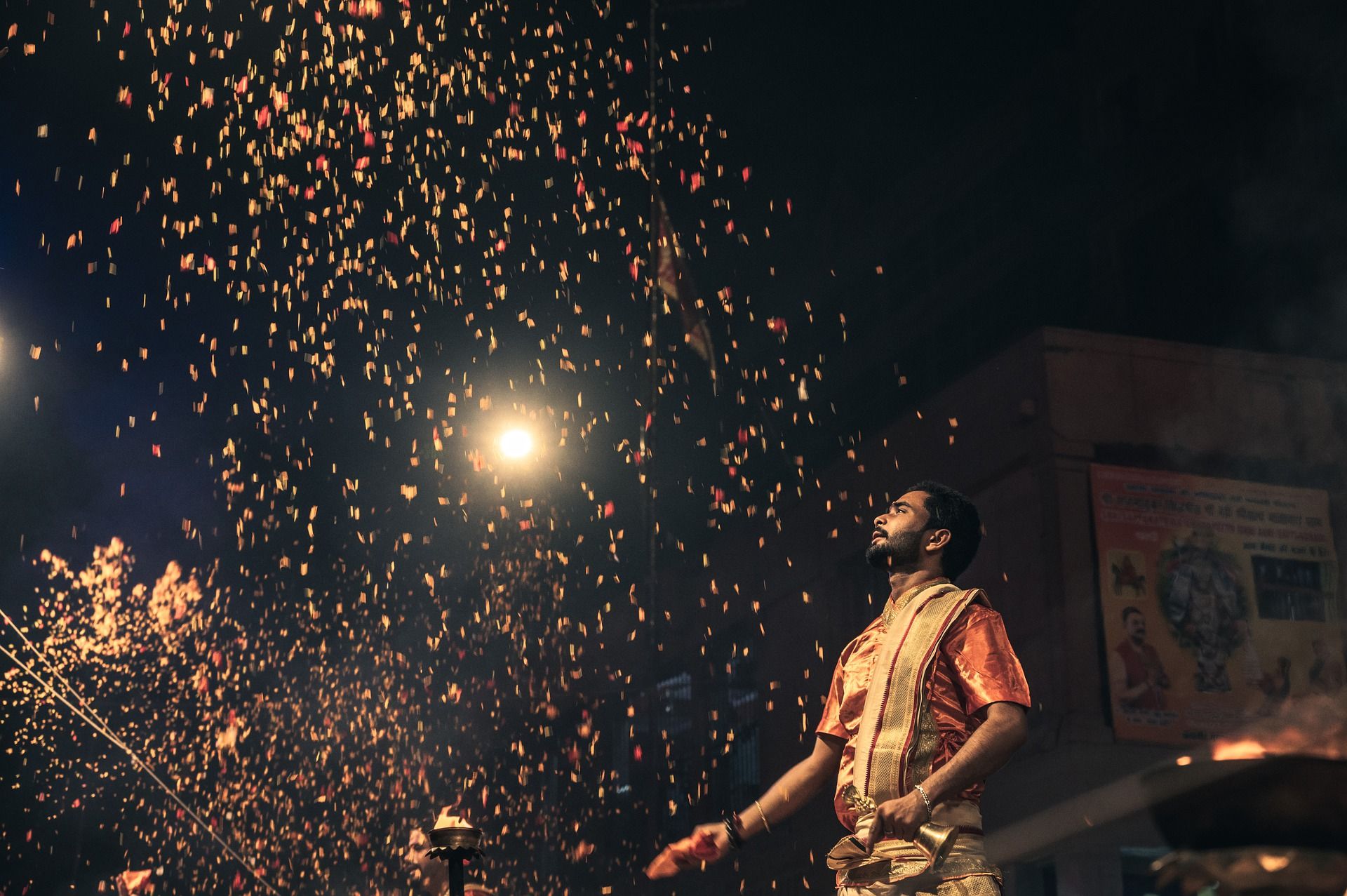
So what does an NRI (non-resident Indian) feel in India now?
These changes have resulted in other improvements in the business landscape that one may not have foreseen earlier. As the Indian businesses fight to compete in those spaces, new business models are emerging.
The Impatient Indian
In 2018, CNN announced that Amazon was the most American company today. In terms of how it is shaping the world around the American consumers.

While its the expanse of businesses is what is driving Amazon's impact on the American corporate landscape, its service standards are also redefining how things need to be done in the US.
Specifically, its ability to deliver products the next day or even the same day! Some are asking if the "Amazon effect" has gone too far.

Too far?
Indian businesses are competing to bring down the time for delivery of products and groceries to under 10 minutes.
Zepto, a Mumbai-based startup that operates a 10-minute instant grocery delivery service, has more than doubled its valuation to $570 million from $225 million less than two months ago as it expands into newer cities. (Source: Zepto, a 10-minute grocery delivery app in India, raises $100 million / TechCrunch)
And they are not the only ones. The other delivery apps and companies are fighting for business from consumers who are the most impatient in the world!
The SLA times the Indian consumers expect are less than two hours.

Companies like Zepto have mastered this art.
Is Logistics the next arena?
While Zepto is leading the "impatient consumer" charge, other companies are competing fiercely as well.
But what is most important is that these companies have:
- mastered the processes and technology to enable such deliveries in cities with bad infrastructure
- have done all this at scale in a very short time
Consider this.
Within a year of its launch in 2021, Zepto was delivering 120 orders per minute. (Source: Business Today)
All the businesses on Amazon (as a platform) sell 4000 orders per minute. (Source: OJ Digital Solutions)
Unbeknownst to us all, one can see Indian companies breaking the scale and delivery code in presumably the toughest market in the world.
Can this expertise not be ported to developed countries?
Imagine a US start-up financed by Reliance Industries or the Tatas with the logistics expertise from Zepto - to nail consumer deliveries to under 30 minutes.
It is the next frontier of the Indian expansion. After the IT services, human resource migration, and medical outsourcing.
What does India offer today?
A growing experience.
While the Inter-city infrastructure has improved unbelievably, the Intra-city infrastructure has been held ransom by the politics of the state and city administrations.
Different interests compete to make the lives of citizens complicated and difficult. Even when little thought and work can change things radically.
Significant changes have occurred. Because of the foresight of the current leadership. That should not be lost.
Video Corner: Ex-Muslim Phenomenon
In the last few years, many ex-Muslims have "come out" in India and are sharing their viewpoints. They are challenging religious bigotry and archaic ways of thinking. In a country that has seen Nanak and Buddha confront the practices of their times and yet be revered, this is in line with the Indian way of life.
This discussion of Sahil with Sanjay Dixit should be watched for its many nuances. Sahil's claim about Saudi Arabia's leadership was most interesting!





Comments ()